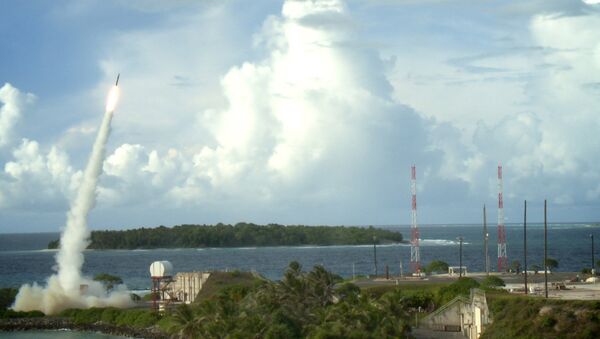In recent months, North Korea has carried out a series of nuclear missile tests. In January, the isolated nation conducted its fourth nuclear test and now claims to be in possession of an atomic weapon. This was followed by a satellite launch and a series of ballistic missile tests, resulting in harsh new sanctions implemented by the United Nations.
The United States and South Korea have cited these events as justification for installing a Terminal High Altitude Area Defense (THAAD) unit on the peninsula. While this has been criticized as a provocation by both China and Russia, the US maintains the system is purely defensive.
On Tuesday, Mark Milley, Chief of Staff of the US Army, reiterated this claim.
"[THAAD] is a defensive measure to protect South Koreans and Americans from the North Korean ballistic missile threat and is not a threat in any way to China," the Army said in a statement released by the US Embassy in Beijing.
China and Russia have both issued warnings that the THAAD system will not only escalate tensions on the peninsula, but also puts their own national security at risk.
"Such actions by the US and South Korea do not correspond to their stated goals and threaten to deal serious damage to the strategic security of neighboring countries, including China and Russia, and worsen the situation in the country," the Russian Foreign Ministry said in a statement last month.
Speaking to Sputnik, military expert Vladimir Yevseyev suggested that Beijing and Moscow may be forced to deploy their own joint missile defense system.
"China has radar stations that can be deployed as an early warning system for any missile attack. Russia, of course, also has such stations of various types. Among the latest radar early warning systems is the Voronezh-M and Voronezh-DM," Yevseyev said.
"As the next step, it may be possible to conduct joint exercises in the Russian Ashuluk range. China, in turn, has combat lasers that are able to influence the objects in the near space."
On Tuesday, Milley addressed tensions in the South China Sea, where Beijing has expressed frustration with Washington’s ongoing "freedom of navigation" patrols within the 12-mile territorial limit of China’s land reclamation projects.
Milley "reaffirmed the US commitment to adhere to international rules and standards and encouraged the Chinese to do the same as a way to reduce regional tensions," the statement reads, adding that the US wants to keep communication channels with China open to "reduce the risk of crisis or miscalculation and candidly address differences."
A highly-contested region through which roughly $5 trillion in trade passes annually, most of the South China Sea is claimed by China, though there are overlapping claims by Taiwan, Vietnam, Brunei, Malaysia, and the Philippines.
The United States has no territorial claims in the region.







